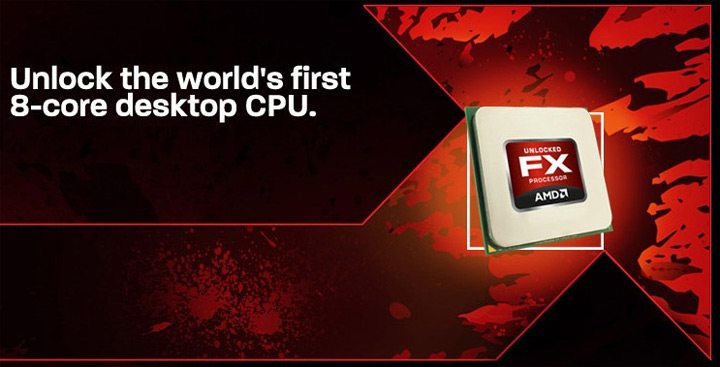AMD FX (Bulldozer) Processors Explained
Andy Ruffell / 13 years ago
It’s been in the news for the majority of this year and lots of speculation was going around about it and how it would perform, especially when compared to the Intel i5 2500k and i7 2600k and of course the existing flagship AMD Phenom II X6 1100t. We were one of the first to report on any speculated rumours and benchmarks as it came out and even saw it first hand at Gamescom, Cologne in Germany running Dirt 3 inside a glass cabinet.
AMD kept everything very close to their chest throughout but ended up doing as they usually do and merged their product range together. When we look at the AM3+ socket, it’s fantastic as it allows you to buy a motherboard based on the platform and then upgrade the processor at a later date. You get to use the same memory, and it works out being a relatively cheap upgrade, whereas Intel expect you to buy a new board, processor and sometimes even the memory depending on if you’re moving from the likes of X58 (triple channel) to Z68 (dual channel). It can all end up very messy and can sometimes even impact sales in a dramatic way.
Touching lightly on where AMD have been up till now takes us to look at the Phenom range of processors, which have seen a great amount of sales, and a good following. Shortly after we saw the slightly improved Phenom II which was welcomed with open arms as they churned out slightly faster models of the existing Deneb core. As AMD were focussing their efforts into new technologies such as Fusion, Llano and of course now Bulldozer, we saw the Phenom II get a 100MHz increase, what seemed like every month. The 955 came in at a stock 3.2GHz with the 3.4GHz 965 appearing a few months on. Shortly after this, the 970 hit the market with an extra added 100MHz and a few more dollars slapped onto the price, and as you guessed it, that was taken over by the new flagship Phenom II X4 975 which had a retail 3.6GHz and a few more notes added on.
This went on like this until the current flagship Phenom II X4; the 980 which sported a 3.7GHz clock speed and still retails for around £131.98 at Scan. Whilst this was all going on, a new kid on the block came from AMD in the form of the X6 processors, which blew the current X4 range of CPU’s out of the water. It featured similar technology as the X4’s but sported 6 physical cores, hopefully putting AMD back into the game whilst rival Intel were sitting comfortably sipping champagne at the success of the i5 2500k and i7 2600k.
Whilst AMD and Intel share a lot of similarities, especially with the Intel K series and AMD Black Edition processors both featuring unlocked multipliers, making them big hits with the enthusiast overclocking industry, AMD always seemed to fall short in terms of performance, but made up from it with the price. Just taking a quick look at both Intel and AMD flagship processors, we see the Intel i7 2600k coming in at £246.20 whilst the Phenom II X6 1100t from AMD is a lot lower priced at £149.82. Give or take, that’s £100 of hard earned cash, and to a lot of enthusiasts, can end up outweighing the performance most of the time.
Coming back to the current date, and where things are today. We find the Intel core i5 2500k and 2600k selling better than ever and taking the market by storm whilst AMD have been busy developing their latest processor, codenamed Bulldozer. Bulldozer is the range of processors that AMD are keen to show off, featuring new technology and up to 8 physical cores, whereas the likes of Intel simply use hyperthreading to gain their extra virtual cores.
The whole point of this article is to explain exactly what the Bulldozer platform is about and more importantly the FX platform, so enough of me rambling on about the past, let’s move forward and see what the present and more importantly the future holds.




















